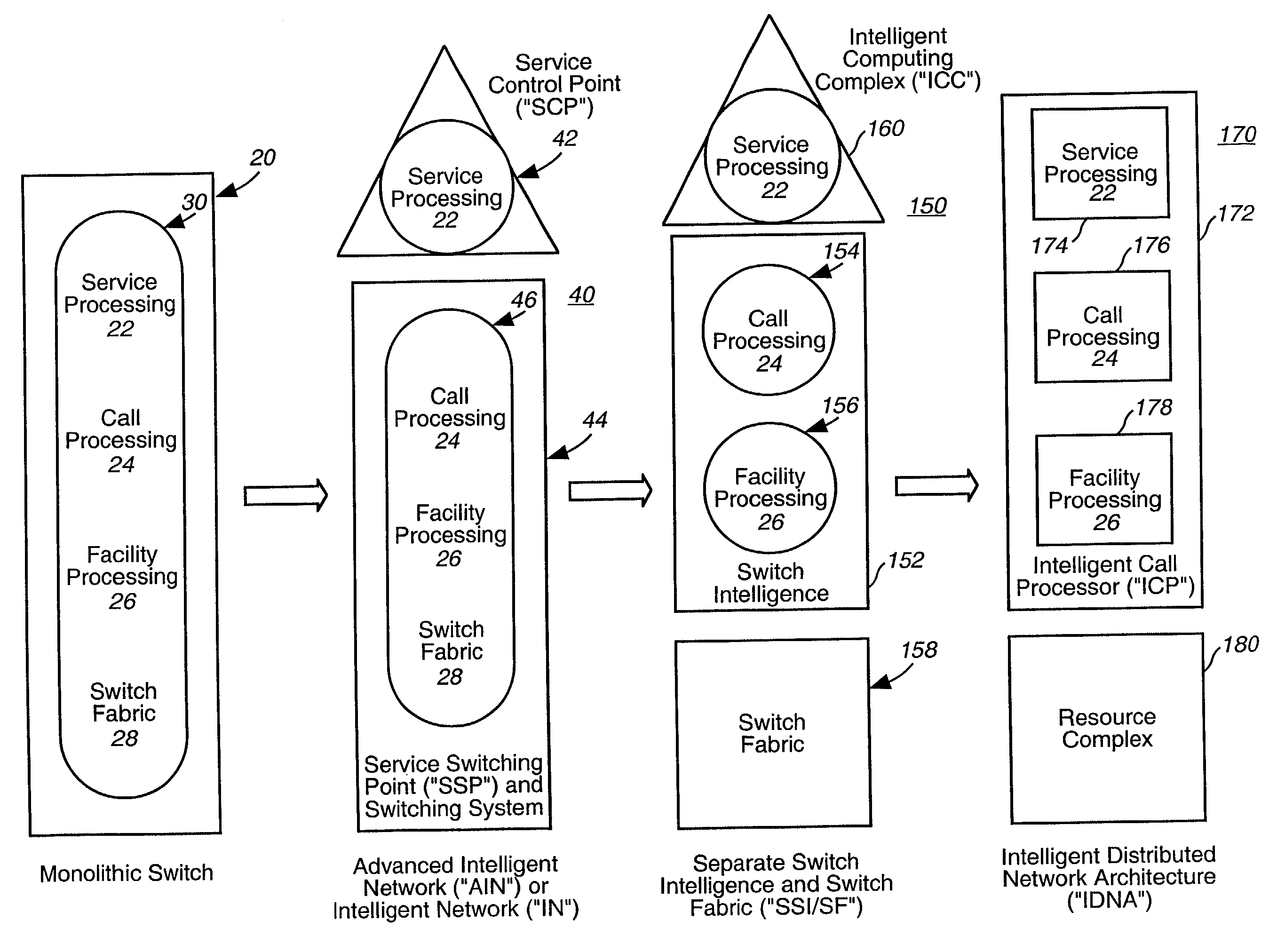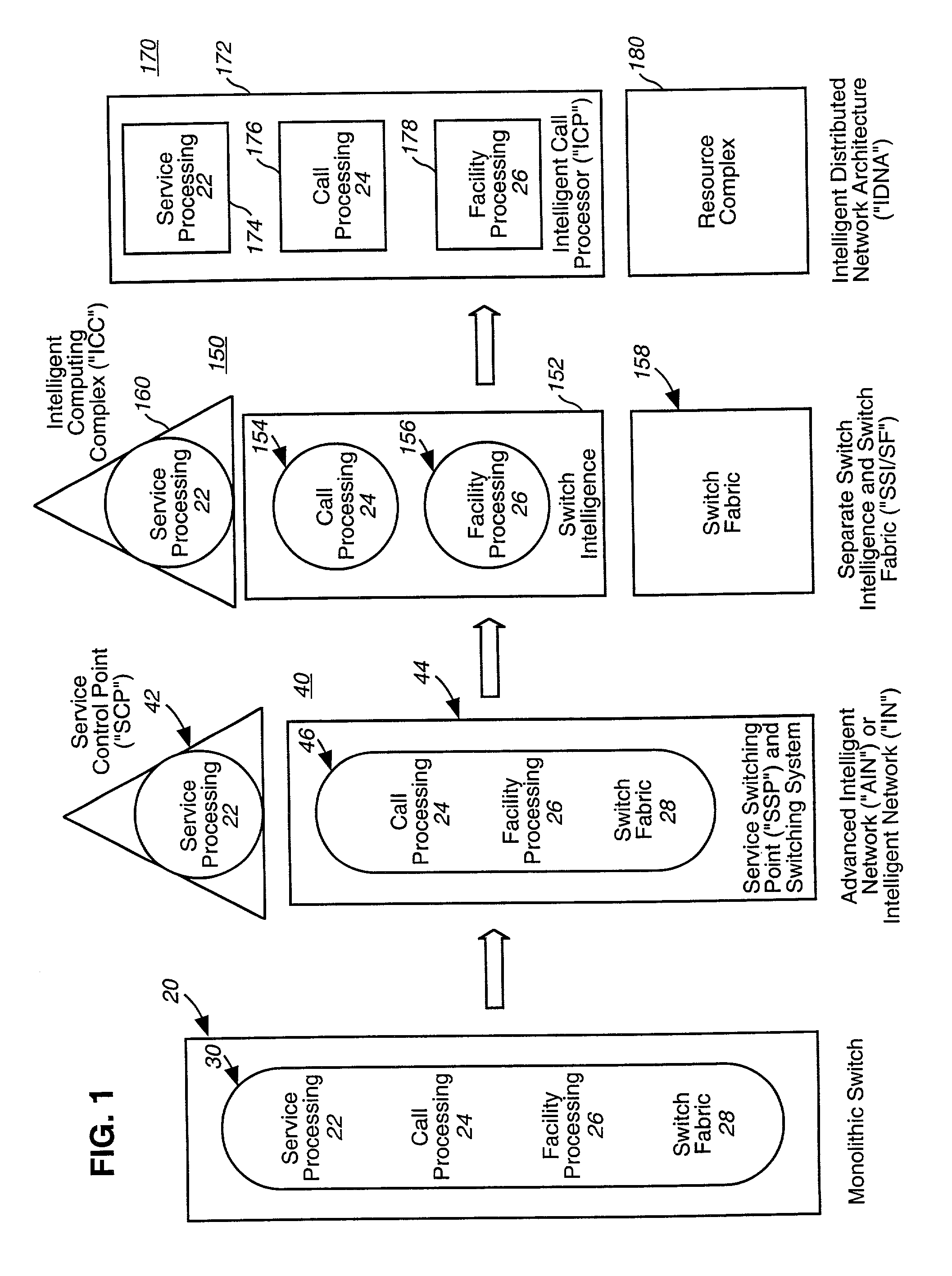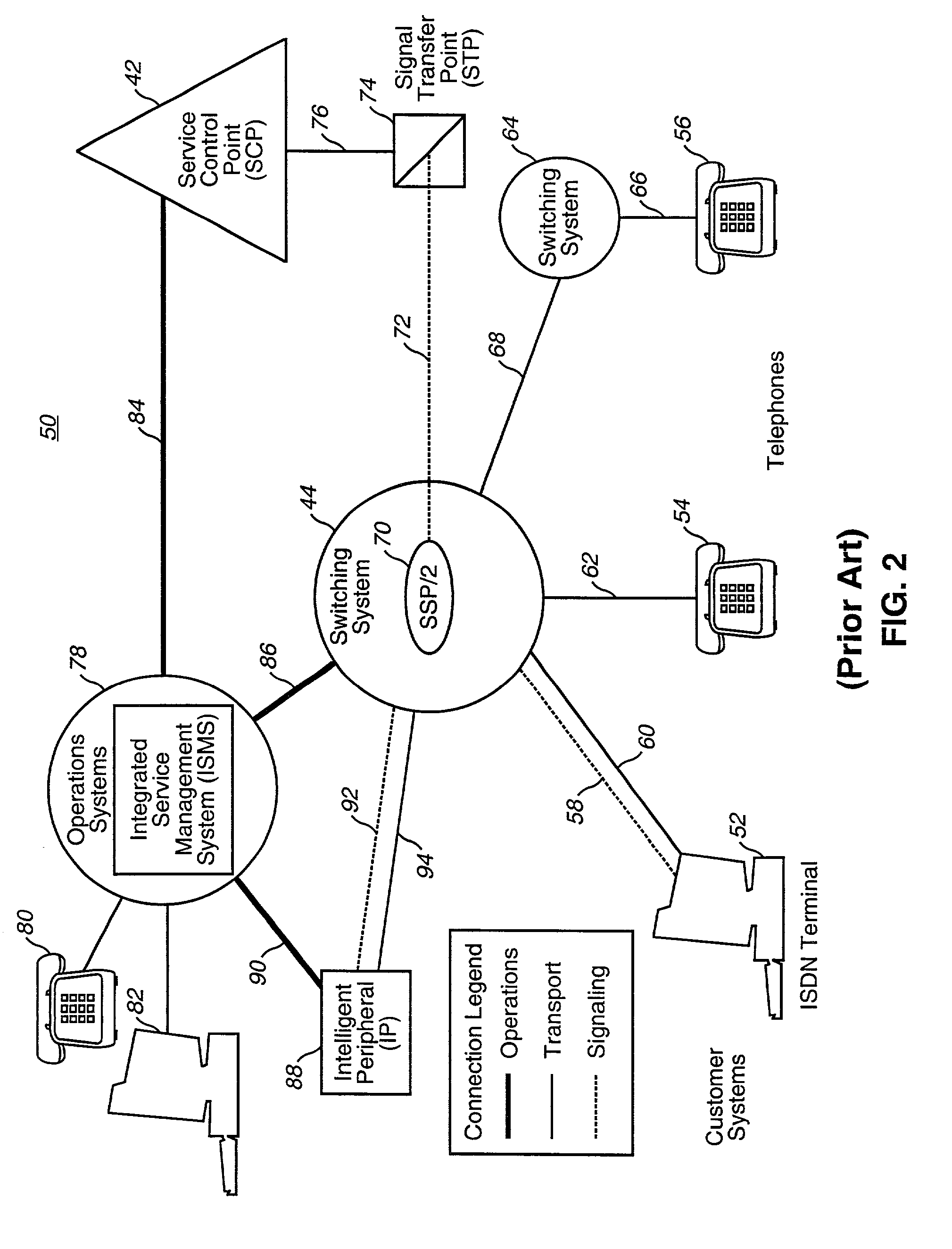Method and apparatus for managing local resources at service nodes in an intelligent network
a technology of intelligent network and service node, applied in the field of intelligent network, can solve the problems of increasing complexity, affecting the service delivery efficiency of subscribers, and extending the time required to develop, test and deploy new software, so as to increase the efficiency and throughput of intelligent network, the effect of conserving intelligent network resources and increasing service provision efficiency
- Summary
- Abstract
- Description
- Claims
- Application Information
AI Technical Summary
Benefits of technology
Problems solved by technology
Method used
Image
Examples
Embodiment Construction
[0048]The present invention is one component of a comprehensive intelligent network alternately referred to herein as an Intelligent Distributed Network Architecture (“IDNA”) or the Next Generation Intelligent Network (“NGIN”). As described herein, the NGIN architecture is designed to perform intelligent call processing services for any type of call received at a resource complex or switching platform, e.g., switch, router, IP termination address, etc. The IDNA / NGIN preferably comprises a plurality of distributed service nodes with each node providing an execution environment providing call processing functionality necessary to handle a call at the instance it is received at the switch or resource complex physically associated with that particular service node. NGIN is of a highly scalable architecture and engineered to ensure that executable service objects, embodied as independent Service Logic Programs (“SLP”), and associated data for performing event services, e.g., 1-800 teleph...
PUM
 Login to View More
Login to View More Abstract
Description
Claims
Application Information
 Login to View More
Login to View More - R&D
- Intellectual Property
- Life Sciences
- Materials
- Tech Scout
- Unparalleled Data Quality
- Higher Quality Content
- 60% Fewer Hallucinations
Browse by: Latest US Patents, China's latest patents, Technical Efficacy Thesaurus, Application Domain, Technology Topic, Popular Technical Reports.
© 2025 PatSnap. All rights reserved.Legal|Privacy policy|Modern Slavery Act Transparency Statement|Sitemap|About US| Contact US: help@patsnap.com



